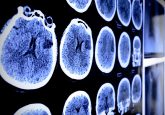#TalkProteomics – Catch up on the mini-Spotlight Twitter chat

As part of our mini-Spotlight on proteomics, we hosted a Twitter chat (#TalkProteomics) on February 22nd, where we questioned John Wilson (ProtiFi; NY, USA), Ben Orsburn (National Cancer Institute; MD, USA), Matthias Trost (Newcastle University; UK) and Eduardo Chicano Gálvez (Maimónides Biomedical Research Institute of Córdoba; Spain) about all things proteomics – from mass spectrometry to drug discovery.
The experts dedicated an hour of their time to answer questions and share their opinions on the field of proteomics. We take a look at some of the highlights below:
Applications in drug discovery
Proteomic techniques can directly contribute to the discovery and development of novel drugs for the treatment for various illnesses and diseases. As highlighted by our panel, mass spectrometry imaging – an essential tool in proteomics – has the ability to trace and localize candidate drug molecules over tissues whilst also being able to perform pharmacokinetic studies.
A5. In the case of #MSImaging it supposes a total revolution as you can trace your molecule over a tissue. You can localize your products of interest over the tissues and today it is even possible to perform a pharmacokinetics studies #TalkProteomics (1/2) https://t.co/gBtwsBQQ9l
— Edu Chicano (@educhicano) February 22, 2019
A5. In other studies, using LCMS, you can see the action of your drug over the entire proteome of a sample (or model organism) and with some bioinformatics works you can do systems biology of the response to the drug as well. #TalkProteomics (2/2) https://t.co/gBtwsBQQ9l
— Edu Chicano (@educhicano) February 22, 2019
and of course high-throughput MALDI TOF and acoustic mass spec. but I don’t necessarily see them as proteomics but more mass spec tools. 2/2 #TalkProteomics
— Matthias Trost ?? (@TrostLab) February 22, 2019
More than just an analytical tool
The panel also took the opportunity to dispel any theories suggesting that proteomics in merely a tool to direct further research by highlighting its ability to answer important biological questions and produce highly quantitative data.
A8 (Part 2): The protein is directing the phenotype. Direct measurement of it is the fastest way to get there. In 2019 if the NIH spent the same amount of money on Proteomics instead of NextGen, we’d see a medical revolution. https://t.co/2Utq54405k
— Ben Orsburn (@ProteomicsNews) February 22, 2019
A8 (Part 3): I am horribly afraid that 10 years from now we’ll look back on Petabytes of noisy, low confidence transcriptomics data the same way we look back on RNA microarrays — “wow. we did a lot of that expensive stuff and we never looked at it again” Proteomics = answers https://t.co/2Utq54405k
— Ben Orsburn (@ProteomicsNews) February 22, 2019
when a protein has been quantified on >4 peptides, I would always think the quantitation will be extremely accurate, more linear than Western Blot and not dependent on antibody specificity. but hey, we get there… 2/2 #TalkProteomics
— Matthias Trost ?? (@TrostLab) February 22, 2019
completely agree. it does slowly change though. I did speak to editors of some good journals and they are more than ok with SRM/PRM instead of proteomics. I think this comes from the times when proteomics wasn’t that good. #TalkProteomics
— Matthias Trost ?? (@TrostLab) February 22, 2019
Challenges to overcome
The panel shared their thoughts on current challenges hindering proteomics research, with a lack of training programs and qualified personnel to fill the growing number of positions, being raised as common concerns. Additionally, it was highlighted that reaching genomics levels of sensitivity and standardization can be particularly problematic when applying proteomics to the clinic.
Q6 What would you say is the greatest challenge currently hindering the field of proteomics? #TalkProteomics
— Bioanalysis Zone (@BioanalysisZone) February 22, 2019
A6 I agree. but it will be difficult as the proteome is obviously changing quite a lot.
compared to transcriptomics we cannot amplify our signal and thus we will always lag behind in sensitivity. 1/2 #TalkProteomics https://t.co/fYnxnmZlZb— Matthias Trost ?? (@TrostLab) February 22, 2019
considering the incredible progress made in proteomics in the last 15 years, I am quite optimistic. Instruments and software become much easier to use. I think now is the time to answer really important biological and medical questions by proteomics. 2/2 #TalkProteomics
— Matthias Trost ?? (@TrostLab) February 22, 2019
I doubt it is a US only problem. From my anecdotal evidence, there are good reasons for people to move to the US for research.
— Chris Ashwood (@chrashwood) February 22, 2019
I’d add Ben that we still need better training and FINALLY harmonized sample prep. It’s totally stupid and if you don’t manage to get proteins out of biology reproducibly, game’s up regardless how shiny and expensive your machine is! https://t.co/CyqrTnaOeO
— Dr. John Wilson (@ProtifiLlc) February 22, 2019
A move towards machine learning?
In recent years, machine learning and artificial intelligence have progressed rapidly with applications in areas including robotics, speech recognition and medical diagnosis regularly seen in the news. Looking to the future, the panel hypothesized that the trend in machine learning may be applied to predicting mass spectrometry spectra thereby creating libraries that can be quickly and easily searched.
Q11 Do you think the role of searching spectrum libraries will change over the next few years? If so, how? #TalkProteomics
— Bioanalysis Zone (@BioanalysisZone) February 22, 2019
#BernhardKüster said this is already done and is amazing. Yes search engines will be done. The bigger long-term trend is if we actually get robust antibody arrays (etc.) to all ORFs, then they will be better than our instruments, which will be good for small molecules and PTMs. https://t.co/T1QaEAiCoc
— Dr. John Wilson (@ProtifiLlc) February 22, 2019
You are absolutely right and I do not want to argue with the real expert here. I assumed that fragment intensity is one of many factors. RT needs to come into the mix as well.
what else would improve IDs?
searches definitely need to become faster – but then you already do that!— Matthias Trost ?? (@TrostLab) February 22, 2019
Future outlook – a nod to clinical application
And finally, the panel shared their perspectives on the future of proteomics research and development with clinical use highlighted as a major milestone to be met.
A13. I think this is more a desire: Hopefully in the next years the proteomics community and techniques can reach the clinical labs allowing the transference from basic research to people’s healthcare. #TalkProteomics https://t.co/gZZZwbGzzL
— Edu Chicano (@educhicano) February 22, 2019
A13 Clinical use. Without a doubt, proteomics will be answering clinical questions and doing clinical diagnostics. https://t.co/fA90x7WsbX
— Dr. John Wilson (@ProtifiLlc) February 22, 2019
A13 the increased competition will improve instruments. While 10 years ago, you knew almost every single proteomics expert, the broader basis of proteomics scientists will result in some very smart people coming up with exciting new technology.
2/2 #TalkProteomics
— Matthias Trost ?? (@TrostLab) February 22, 2019
A13: PROTEOMICS IN THE CLINIC!!! It’s one of the biggest reasons we need to move from NanoSpray! https://t.co/1aMPDLlBeA
— Ben Orsburn (@ProteomicsNews) February 22, 2019
A13 (Part 2): @labs_mann is showing us that we CAN impact patients now. Demonstration after demonstration, proteomics is ready for medicine. I hope we can see labs that aren’t such technical powerhouses pick these up and show they can do this as well. https://t.co/1aMPDLlBeA
— Ben Orsburn (@ProteomicsNews) February 22, 2019
A13 (Part 3): As we see more proteomics that uses less fancy nanoLC it will be easier to believe we’ll see real benchside Clinical Proteomics in the coming years. https://t.co/1aMPDLlBeA
— Ben Orsburn (@ProteomicsNews) February 22, 2019
Thank you again to our panelists for giving up their time to share their knowledge in proteomics research and development – we had some fantastic, varied perspectives highlighting some of the challenges hindering research and how these may be overcome to progress the field.







